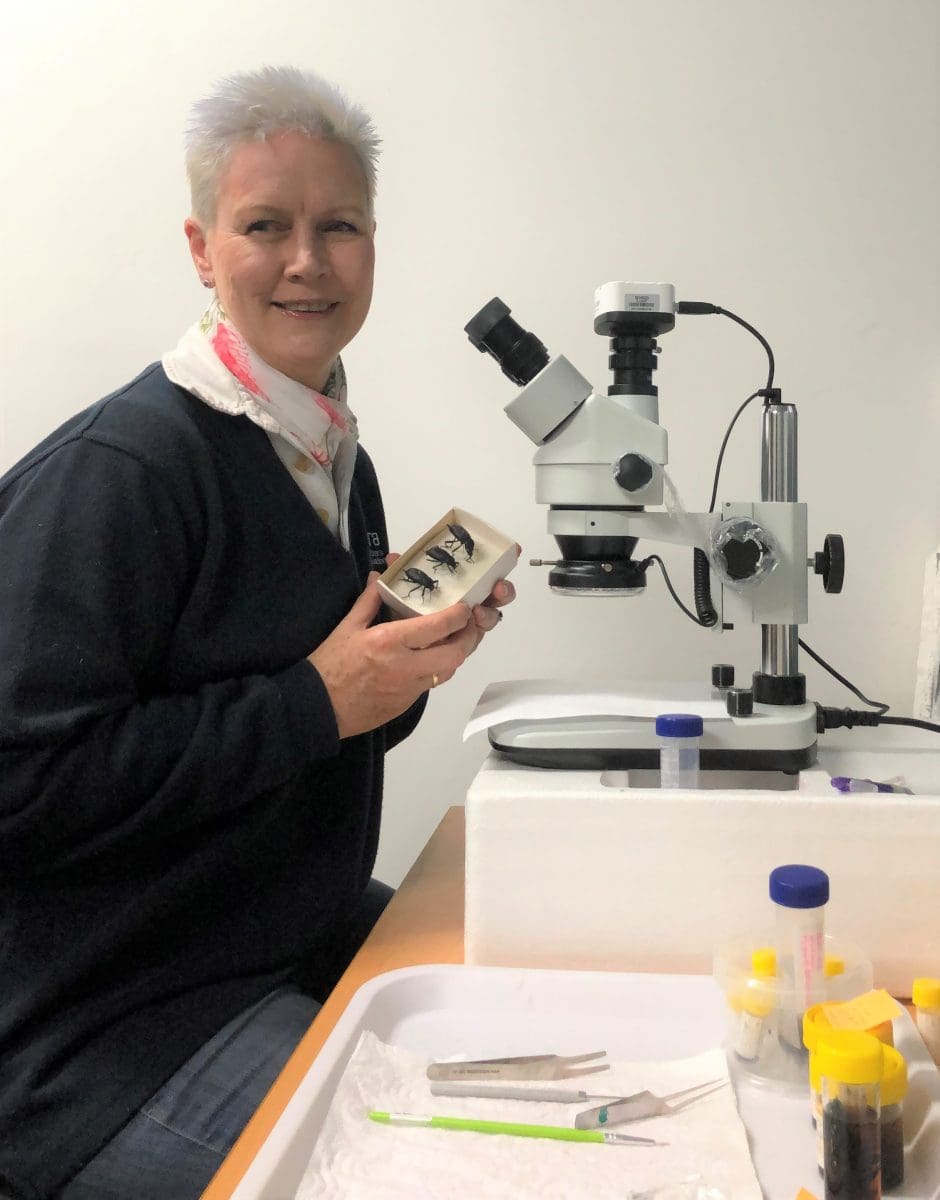
Fireline in a barley stubble paddock. (Photo: AgXtra)
THE devastating impact of bushfires which have ravaged many parts of rural Australia in recent times is known only too well.
What is significantly less known is the effect these fires have on farming systems in terms of crop diseases, pests and beneficial species.
This research question is now being investigated in South Australia where fire grounds have become hubs for unprecedented studies.
The Grains Research and Development Corporation (GRDC) has invested in a unique research program which aims to provide grain growers with greater knowledge about the impact of bushfires to inform effective post-fire management strategies for crop pests and diseases into the future.
Surveillance of organisms is being undertaken by AgXtra at sites on Kangaroo Island and southern Yorke Peninsula where fires burnt large tracts of agricultural land, including crops and stubbles, late last year and into 2020.
GRDC crop protection manager – south, Ruth Peek, says the recent SA fires had provided a valuable opportunity to examine the implication of such events on cropping environments over a 12-month period.

Julianne Farrell
“We are keen to assess the impact of bushfires on crop pests and diseases – to discover if they re-establish in the landscape post-fire and if they do, just how quickly they return and to what extent,” Mrs Peek said.
“This information will support growers in understanding the consequences of fire on their farms, and enable them to implement recommended strategies that may assist in their efforts to manage pests and diseases.”
AgXtra personnel have established comparative sites (burnt and unburnt) on Kangaroo Island and the Yorke Peninsula where they are regularly monitoring composition and abundance of invertebrate pest and beneficial species and disease incidence.
Paddock management practices and crop yields for previous seasons are also being collated to assist understanding of other factors that may impact on invertebrate diversity in cropping systems.
AgXtra senior research officer Julianne Farrell said the comparative sites – three on the island and four on the penisula – had been located where wheat, barley and bean stubbles had remained adjacent to burnt cropping land. Nearby green bridge areas are also being trapped for comparison purposes.
A range of trapping mechanisms, including pitfalls and sticky traps, have been set up to provide analysis of species diversity and population dynamics over a year. The traps are replaced on a monthly basis and trap catch identified.
Mrs Farrell said she had so far been surprised at the invertebrate diversity – largely beneficials such as parasitoid wasps, honey bees, hover flies, spiders, moths, carabid and ladybird beetles – in unburnt stubbles.
These beneficial invertebrates are important predators and parasites of significant pests such as mites, aphids, caterpillars and earwigs.
Less beneficial species have been recorded in the burnt areas, although those populations are expected to increase as the landscape recovers and new crops are sown and established.

Scientists used a range of trapping mechanisms, including pitfalls and sticky traps.
Invertebrate pests under investigation include Egyptian beetles, black Portuguese millipedes and European earwigs – all introduced species that cause damage to a range of broadacre crops.
Mice are included in the studies on Yorke Peninsula, while the endangered Kangaroo Island dunnart (a mouse-sized native marsupial predator of crop pests) will be monitored on the island.
While lack of food and cover has driven mice out of burnt areas, they are still quite active in the unburnt areas.
“Now that sowing has been completed, I urge growers to monitor activity in their paddocks and bait where necessary,” Mrs Farrell said.
Soil samples were extracted from burnt and unburnt sites at the beginning of the research project and have been provided for crop disease and soil beneficial organism analysis to the South Australian Research and Development Institute (SARDI), the research division of Primary Industries and Regions SA.
Soil sampling will be repeated towards the end of the year to gauge any change in disease and beneficial organism presence.
Source: GRDC

HAVE YOUR SAY